How to Seduce Your Readers & Woo-Bait Links
 Imagine: You’re in the running for your dream job. All you have to do is pass the interview and it’s all yours. So, you get ready to head to the office, but on the way you stop off to grab a quick bite to eat. When you finally make it to your interview, you notice everyone seems nervous and has difficulty making eye contact. You lose your concentration and fail to mention the important points you’d carefully placed on your mental to-do list.
Imagine: You’re in the running for your dream job. All you have to do is pass the interview and it’s all yours. So, you get ready to head to the office, but on the way you stop off to grab a quick bite to eat. When you finally make it to your interview, you notice everyone seems nervous and has difficulty making eye contact. You lose your concentration and fail to mention the important points you’d carefully placed on your mental to-do list.
The interview is short and awkward and you know you’ve lost the job before it’s even over. Once you get home, you happen to glance in the mirror and get a sick feeling in your stomach. Part of your lunch is still on your face. You forgot to check before you got to your interview, and now it’s too late. There are no second chances.
Link bait works the same way. If you don’t perfect the presentation and focus of your content, your traffic will simply go elsewhere without a second thought. You won’t get the results you’re expecting, and sadly, you’ll never know how many links you lost out on.
Link Bait & AIDA: Designing Your Link Bait for Success
Link bait doesn’t usually have buy buttons or testimonials, but it’s still similar to a landing page. Both content types need to:
- Grab Attention.
- Hold the reader’s Interest.
- Incite emotions and Desire in the reader.
- Convince readers to take Action. (Convert them)
- Provide value after the conversion.
- Have a focused, clear design that complements your well-written content.
That’s a lot for one piece of content to accomplish, so every element needs to be perfect. You need a proven conversion formula like AIDA.
So what do I mean by AIDA, exactly? It’s an acronym for : Attention, Interest, Desire, and Action.
A = Attention: Craft a Powerful Headline
The headline has no more than ten seconds to grab a reader’s attention and to do that, it has to:
- Stand independently: Does it tell the reader what the content is about?
- Grab attention: Does it catch the eyes of people who will link back to you?
- Promise value: Does it promise the reader a return on their investment (time)?
- Contain power/action words: Verbs and power words like free, cheap, and fast get attention and add to the value.
- Have a clear message: Does your headline promise to provide the reader with a particular benefit? (Just make sure you live up to this promise in the content.)
- Stand out: Does the headline stand out visually from the rest of the page and its contents?
You can also strengthen your headline with design elements, like the image below (taken from the Harrods.com website). The headline promises their swimwear will make her sexy (a value/benefit). And the image drives the point home:

I = Interest: Make the Content Interesting
When building a landing page, you need to answer the visitor’s biggest question: “So what?”
What does your visitor gain by buying your product? Because link bait doesn’t outright sell something, you’ll need to use other methods of generating interest.
One solution is to pull the reader through to the next step in the “reader conversion funnel” by focusing on details that will pique his/her interest the most.
A few years back, Danielle Winfield of BlueGlass wrote a post called “When Offline Linkbait Ignores the Online Part.” In it, a popular pet magazine had featured an article on famous peoples’ pets. Sadly, their layout fell short. Danielle provided a list of changes that could have increased the amount of attention and links they could have gotten.
Her biggest suggestion? Play on the reader’s interest in celebrities.
And don’t forget about formatting: Subheadings and bolded text will help the reader identify the important information quickly.
So how do you know if you’ve done it right? If you cut out everything except the subheads, bolded text, and bullet points, the reader should still get the basic facts from the article.
D = Desire: Make Your Reader Feel Something
Ask anyone who knows me or has followed me on Twitter for a while, and they’ll tell you I frequently cry over a good movie, book, or video. In fact, if it doesn’t make me laugh, cry, or rant, I feel disappointed and won’t recommend it to others.
Link bait works in exactly the same way.
Link bait shouldn’t necessarily make you cry (although it has been known to happen), but it should make you feel something. Most of the time, I link back to posts because it gave me an “I never thought of that” moment, or I felt so passionate about a topic that I couldn’t help but reply.
To get the reader emotionally involved, engage his/her five senses. Not sure how to do it? This technique is discussed in some detail by James Chartrand.
In the meantime, check out the copy below from Lola’s. Not only does the copy make excellent use of the five senses, but the design also enhances the reader’s emotional response. (I know that made you hungry, so I’ll wait while you grab a snack.)
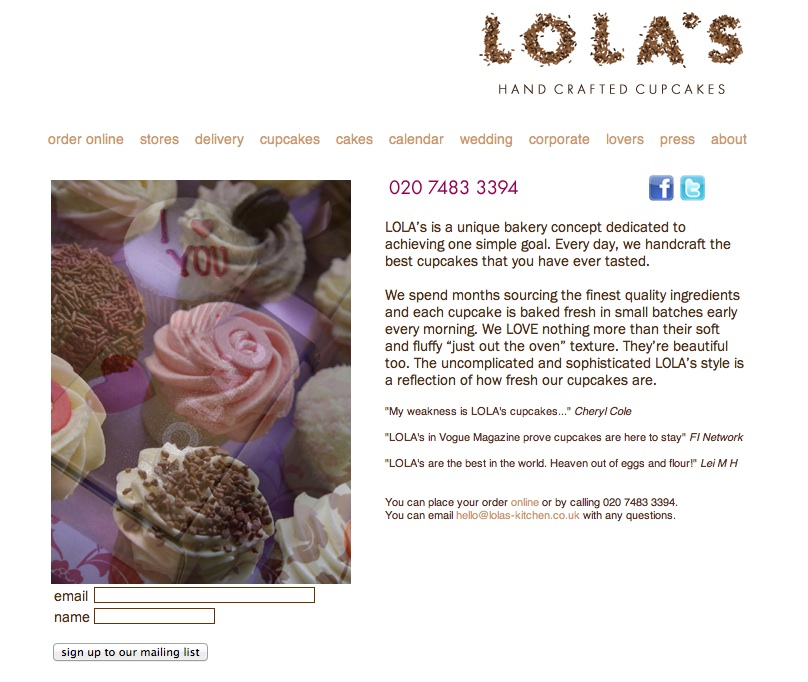
A = Action: Ask for the Link
This is where you’d normally plaster a big ol’ call to action on the page that screams, “buy me!” But link bait is different. Asking people to link back to you doesn’t work that well. Readers need a reason to do it.
If you’ve completed the previous step successfully, much of this should already be done for you. But you can take steps to encourage interaction (and links):
- Ask a question or opinion at the end.
- Say something controversial, slightly biased, or partially incorrect. (Just be careful with this one. The last thing you want to do is come off looking uninformed. Or worse.)
- Leave parts out. If you “forget” something, someone will surely fill in the blank for you. Just be sure to fulfill the promise you made in the headline.
- Offer an incentive. While this only works with certain types of link bait, it can be extremely effective if you use the right motivator. It doesn’t have to be anything big, either. It simply needs to be something most of your readers won’t be able to get access to on their own.
- Tie them personally to the piece. If you write a direct response to someone and kick-start a friendly debate, or address him/her specifically in the content, s/he may return the favor.
The AIDA technique doesn’t guarantee you success every time, but this technique will certainly help in getting your content read and link-loved.
Want to know more? Read Steven Bradley’s article on the subject. (And be sure to check out the series written by Tim Ash that he included at the bottom of the post, as well.)
Now it’s your turn: Have you used AIDA to improve the success of your link bait?
 About the Author – Angie Nikoleychuk
About the Author – Angie Nikoleychuk
Angie Nikoleychuk is the senior copywriter, consultant & strategist at Angie’s Copywriting Services. She specializes in link bait creation, content strategies, and content optimization. Like to learn more about creating effective link bait? Check out Angie’s new e-book: Creating Successful Link Bait – the ultimate guide to link bait creation.
photo thanks to o5com

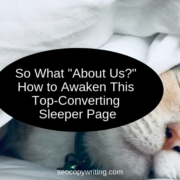
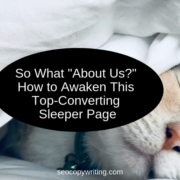
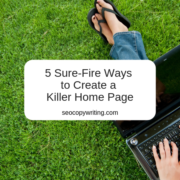
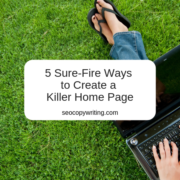
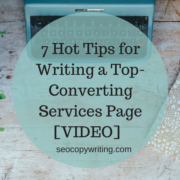
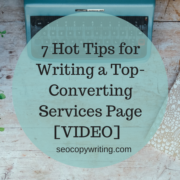
I love your stance on books and movies Angie.
One of my favorite business philosophers, Jim Rohn, was fond of saying of movies, “Make me laugh, make me cry, just don’t leave me the same as when I walked in.”
This is very good premise to operate from when generating content. One guy I learned a ton from on this topic is Karl Iglesias and his presentation he did based on his book, “Writing For Emotional Impact”.
Karl is a coach to screen writers and the high concept he presents from on his site is . . . “It’s all about the reader’s emotional response to the page”.
I highly recommend that anyone who’s looking to infuse their copy with more emotional awesomeness, go google him and check out what he has to offer.
Hi Lewis
I find writing fiction each day really helps. Not that I’m particularly good at it, but because I find it really helps develop ideas and add emotion to my writing in general. Thanks for the tip! I’ll have to have a read.
Angie
Interesting post Angie, I completely agree with what you say about headlines, I’ve experimented with slight tweaks to my headlines with great results. Well worth the time to think and rephrase.
To capture attention, you need to play to people’s emotions. Making someone feel something is what will get them to take action and pass a link on. If the content is boring or doesn’t bring up anything new it will be passed over.
Hi Gerry >> Thank you for your kind words. I find the same thing as you when it comes to headlines. I’m always testing and tinkering.
Hey Nick >> You’re absolutely right. It’s no different than a good movie or book in that regard.
Angie